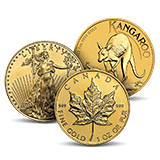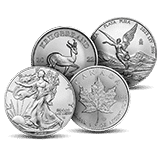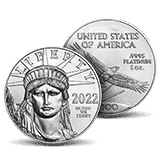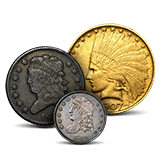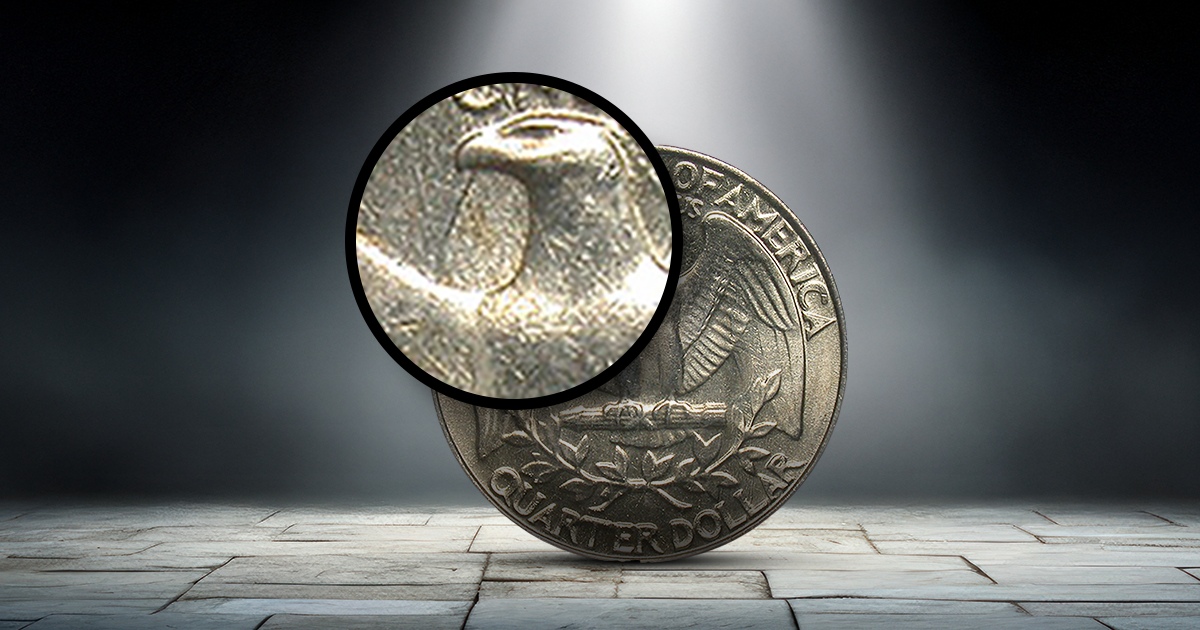
The 1983 spitting eagle is found on a Washington quarter from the Philadelphia mint that shows a narrow raised line, which appears to project from the eagle’s beak on the reverse. The spitting eagle is beloved for its visible die clash line, which can be seen without magnification, and because gem examples are genuinely scarce due to distribution patterns in the early 1980s.
Minting and Die Mechanics
Die Clash
When two working dies strike each other with no blank planchet between them, a shallow mirror image of each design is transferred to the opposite die face. Each strike afterward passes that ghost of the other design onto coins. For the spitting eagle, the ghost comes from a portion of Washington’s neck aligned with the eagle’s beak and right field.
Discovery and Recognition
Researchers spotted the spitting eagle in the late 1980s after variety hunters searched clad quarter rolls. The variety was added to the Cherrypicker’s Guide as listing FS 901, which gave it national visibility. NGC later adopted code VP 001. Combining a published listing and clear diagnostics moved the variety from regional curiosity to a widely recognized target.
Understanding the Spitting Eagle Die Clash
The die-cash line begins just below the tip of the eagle’s beak and extends diagonally toward the eagle’s shoulder, making it appear like the eagle is spitting or eating a worm. In some examples, faint supplementary clash traces appear near the tail feathers and the arrow bundle. Some obverses from the same die pair show faint raised areas on Washington’s neck, confirming the origin of the reverse ridge.
Identification and Diagnostics
Primary marker
A raised straight line emerges from the beak that sits above the field rather than incised into it.
Secondary clues
There are faint clash traces on the reverse around the arrowheads and sometimes a whisper of transferred design on Washington’s neck.
Numismatic Context
Clash varieties appear in almost every United States Mint denomination coin. Still, the spitting eagle has a single bold line that is easy to spot compared with the more complex light transfer patterns seen on some earlier silver issues. Within the 1983 Philadelphia output, the only other variety that rivals it for fame is the doubled die obverse cataloged as FS 103. These two coins give the clad era series the headline targets that motivate roll searching even four decades later.
Comparable Die Clashes
Other denominations offer celebrated clash examples, yet each shows different mechanics. The 1994 Lincoln cent extra column clash features columns from the Memorial building transferred to the obverse. That design interaction differs from the spitting eagle, where only a fragment of the Washington bust crosses to the reverse. The Jefferson Nickel series hosts several partial clash varieties, but none display a single straight line with the same clarity.
The 1983 Spitting Eagle Washington Quarter delivers a combination that modern collectors value. Its clash line is dramatic and easy to explain. Its high-grade population is genuinely limited because Mint set packaging skipped the year. Its status in major reference works provides the pedigree that registry builders demand. With firm diagnostics and a clear market record, the spitting eagle quarter will continue to rank among the most approachable yet challenging clad era varieties.

